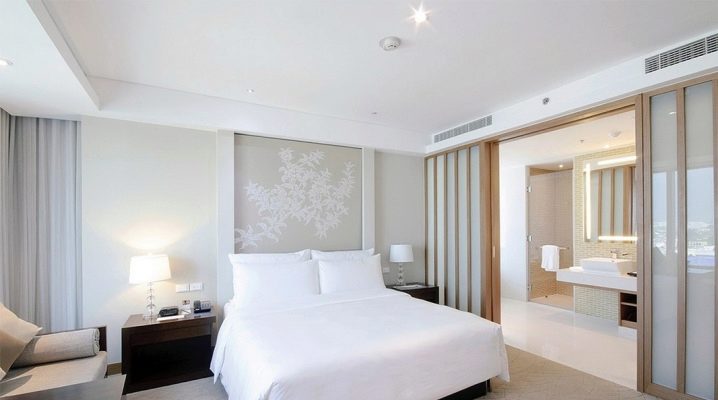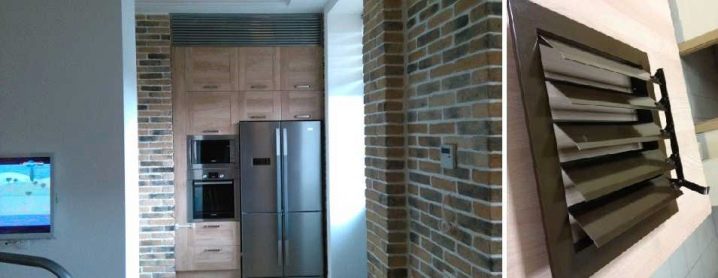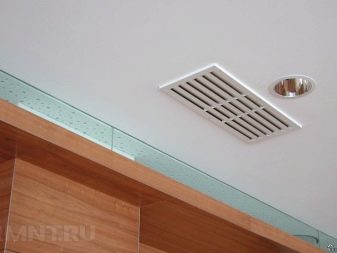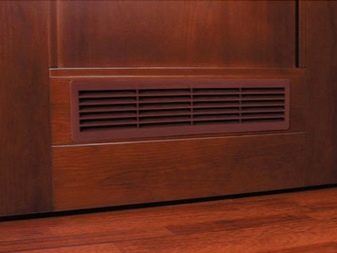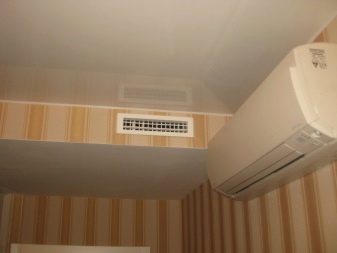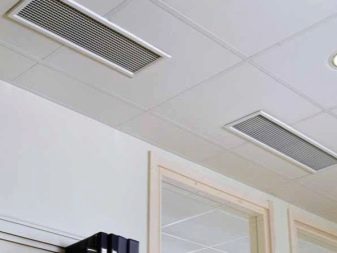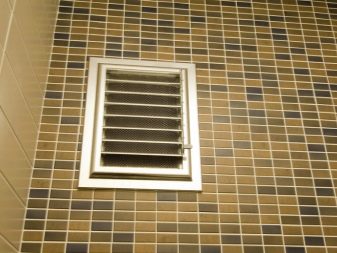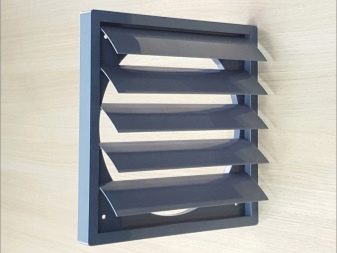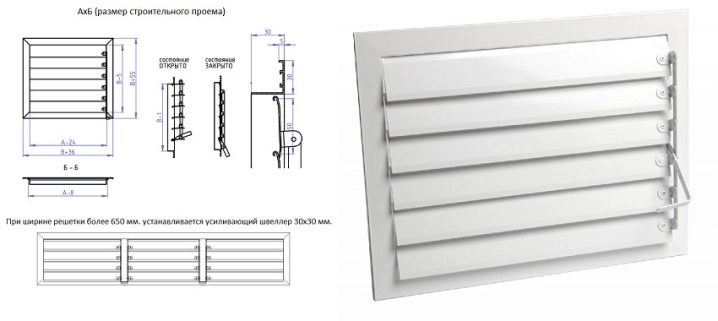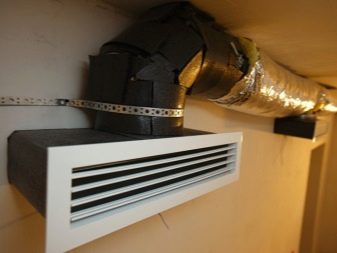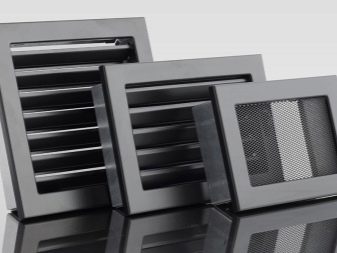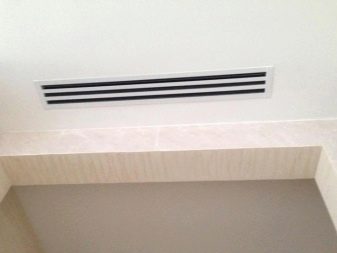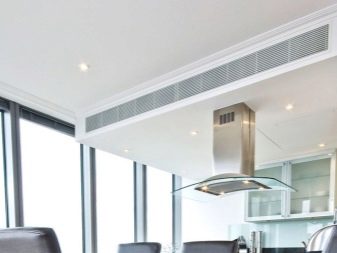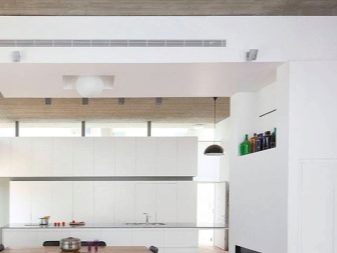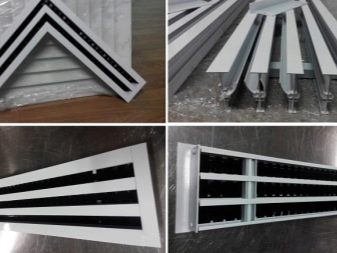Adjustable ventilation grille: features, types and installation
Adjustable ventilation grille is a convenient and functional invention and is not only highly practical, but also has excellent decorative properties.
Device and purpose
Structurally adjustable grille is a device consisting of a frame (frame) with a fixed louvre shutter mechanism and a lattice overlay. Some models are equipped with movable mechanical gate valves, which are flat inner plates and, when rotated, open slotted holes. Blinds can have one-or two-row execution and be located vertically or horizontally. Two-row models are considered to be the most convenient, allowing more precise adjustment of air flow by changing the angle of inclination of the louver.
The main purpose of the adjustable gratings is to control the incoming air flow and the removal of already spent masses. With the help of gratings, you can change the direction of fresh air, reduce or increase the intensity of its flow, or close the entrance to it. Due to the ability to reliably arrest the vent, the grilles are able to prevent unpleasant smell, dust and small insects from entering the street, as well as to exclude heat loss from the room when the external temperatures decrease.
In addition, the grilles do not allow reversal of air currents, eliminate drafts and contribute to a uniform distribution of air masses throughout the room. Models effectively quench the speed of gravitational flows and reduce the hum.
The decorative function of the grilles is also difficult to overestimate - the models are the logical conclusion of the ventilation system and hide the unaesthetic through-hole of the duct.
Lattices are made in internal and external execution and can be installed on external and internal walls, a floor or a ceiling. According to the control method, the adjustable gratings can be mechanical or inertial.The former are activated by physical effort, and the latter are closed on their own in the absence of the necessary traction. There are also models with electric drive, the process of opening and closing in which is fully automated.
In addition to traditional household grilles, there are specialized products, the operation of which occurs taking into account the specifics of the premises. Such devices can be endowed with anti-vandal mechanisms, be resistant to extremely high and low temperatures, be equipped with a heat recovery function and be equipped with sound insulation. Some models are equipped with a damper that prevents the device from rattling during operation.
The scope of application of adjustable gratings is very wide: models can be installed in all types of supply and exhaust ventilation systems and used in premises of any purpose. Due to its regulatory ability, the devices are convenient for use in spaces that do not imply a constant inflow of fresh air. For example, a lattice installed in the basement of a dwelling house or cellar, in dry weather, will allow air masses inside, and in rainy weather, will act as a barrier to moisture penetration and prevent dampness of the foundation.
In garages, warehouses and basements, it is recommended to use galvanized lobe lattices, in which the intensity of the passage of air masses is regulated by the valve and is carried out by turning it clockwise.
Principle of operation
The essence of the action of adjustable gratings is quite simple: due to its ability to change the position of the louvre rails, the gratings direct the air flow to the desired location, and the shape of the product itself is responsible for the uniform distribution of the incoming masses. In lattices equipped with valves, the function of adjusting the direction of the air jets is absent. Such models can only limit the flow rate and do not affect the uniform distribution of air.
The principle of operation of inertial grids is that when a flow reversal occurs or when there is no air movement, the blinds close. The installation of such models in ventilating systems with natural piping eliminates the need for using a check valve, which is necessary to eliminate the effect of the duct traction. The use of inertial grids helps to completely eliminate the penetration of odors from adjacentpremises.
In the flow models installed between adjacent rooms, V-shaped slats of the blinds are provided. This design prevents the penetration of light from room to room and makes staying in them comfortable. The principle of operation of external grilles with heat recovery is that the outgoing air transfers its thermal energy to the incoming air, as a result of which the condensate formed does not freeze and does not interfere with the operation of ventilation.
Advantages and disadvantages
The use of adjustable ventilation grilles has its strengths and weaknesses.
The advantages of the models include the compactness and lightness of the devices. The weight of household grilles varies from 800 g to 1.3 kg, thanks to which the devices can be installed on lightweight plasterboard partitions. The range of devices offers products with both round and square sections, which makes it easy to install models on any duct configuration. In addition, the cost of the gratings is much lower than the cost of diffusers and anemostats.
The advantages also include safety of use, quiet operation and the ability to regulate the flow.Products are produced in a wide variety of colors and designs, which greatly simplifies the selection and allows you to purchase the grille for any interior.
The disadvantages of adjustable grating include the tendency to corrosion of metal models and the low efficiency of the uniform distribution of air masses in comparison with anemostats and diffusers.
Species
Adjustable ventilation grilles are classified by location and can be external, internal or overflow.
Outdoor models are installed on air ducts on the outside of buildings and are often equipped with mosquito nets and a heating function. These products are divided into several types:
- front grilles are designed to provide ventilation of attics and are distinguished by an extended decoration edging;
- basement models are installed on the ventilation ducts of the basements and are characterized by durable construction and protection from rodents;
- door grids act as a check valve and are used in natural intake systems;
- floor models are installed in ventilation systems that supply air to the room from below,also differ in the high durability and wear resistance.
Internal models are installed indoors and are available in several versions.
- Kitchen models. Such grids are equipped with a check valve and have inertial louvers, which completely eliminates the reverse flow of exhaust air into the room.
- Fireplace models are used to circulate warm air from fireplaces or stoves to adjacent rooms.
- Slotted grids are usually installed under the ceiling or placed between the interior. Models differ in the small sizes of a working surface and are almost imperceptible at installation.
- Overhead traditional models are used in any premises and are characterized by modern design and low cost.
Flowing grids are installed in the interior partitions and doors, serve to ensure the circulation of indoor air.
Differ lattice and manufacturing material. The easiest and most inexpensive raw material is plastic. Plastic models have a wide range, a wide variety of colors and aesthetic appearance.The disadvantages of such products include the inability to operate in conditions of high and low temperatures, as well as the likelihood of burning of color models. It should be noted that, in addition to plastic, for the manufacture of gratings used brass, galvanized and chrome steel, as well as aluminum.
Metal grilles are characterized by a long service life and reliability of the rotary mechanism of the blinds. The disadvantages include a lot of weight and the likelihood of rust. The most expensive and attractive are models with wooden veneer. The frame and blinds in such products are made of metal or plastic. Wooden versions have an unusual appearance and are used for indoor installation.
Criterias of choice
When choosing a model, you need to focus on a number of important factors.
The size of the product is completely determined by the dimensions of the air duct of the ventilation system. The width of products varies from 5 to 24 cm, and the height can reach 24 cm. For overall ducts with a side length or section size exceeding 30 cm, the fabrication of the grilles is made to individual order.
The shape of the grille frame also depends on the initial parameters of the duct and can be round or square. The top cover may not coincide with the shape of the frame and have a round, rectangular or ellipsoidal design.
The regulatory mechanism is selected in accordance with the purpose of the room. In spaces that do not involve the constant presence of people, you can get by the mechanical valves, actuated by a lever. In residential and public spaces, it is advisable to use models equipped with swivel shutters. When choosing a model for kitchens and bathrooms, one should pay attention to the presence of a check valve function in the product.
Installation
Installation of gratings is very simple and is as follows:
- the frame of the model is installed in the end of the duct and fixed to the wall, floor or ceiling with dowels or screws;
- the joint of the frame and the duct is equipped with rubber gaskets and is sealed with silicone sealant;
- installation of spring spacers is made according to the instructions;
- after the sealant has completely set, the decorative overlay is put in place and fixed to the frame athelp of self-tapping screws or special clamps.
Adjustable grilles are an important part of the ventilation network. They are easy to install, easy to use and help maintain a favorable microclimate in the room.
How the adjustable ventilation grill works see the following video.
